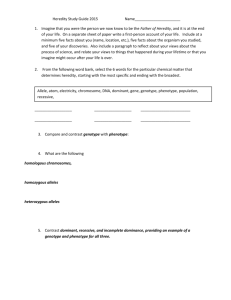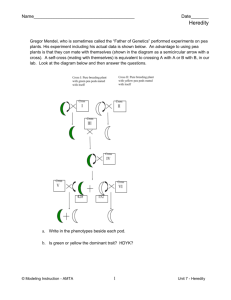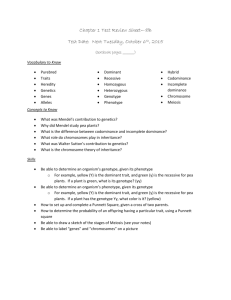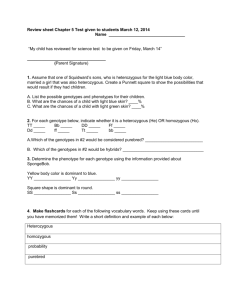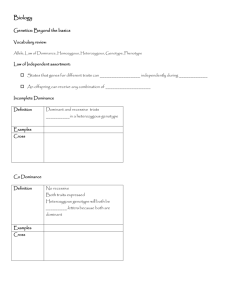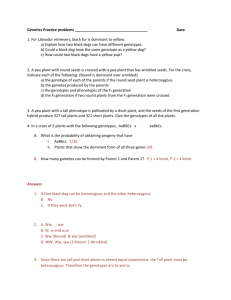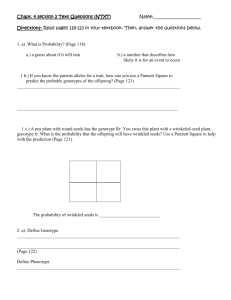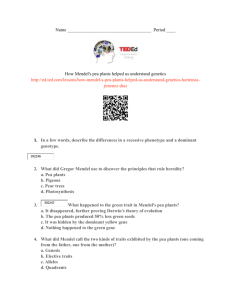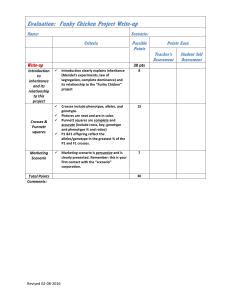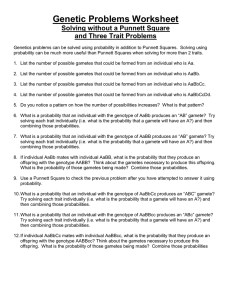Forked Line Method for Genetic Crosses
advertisement
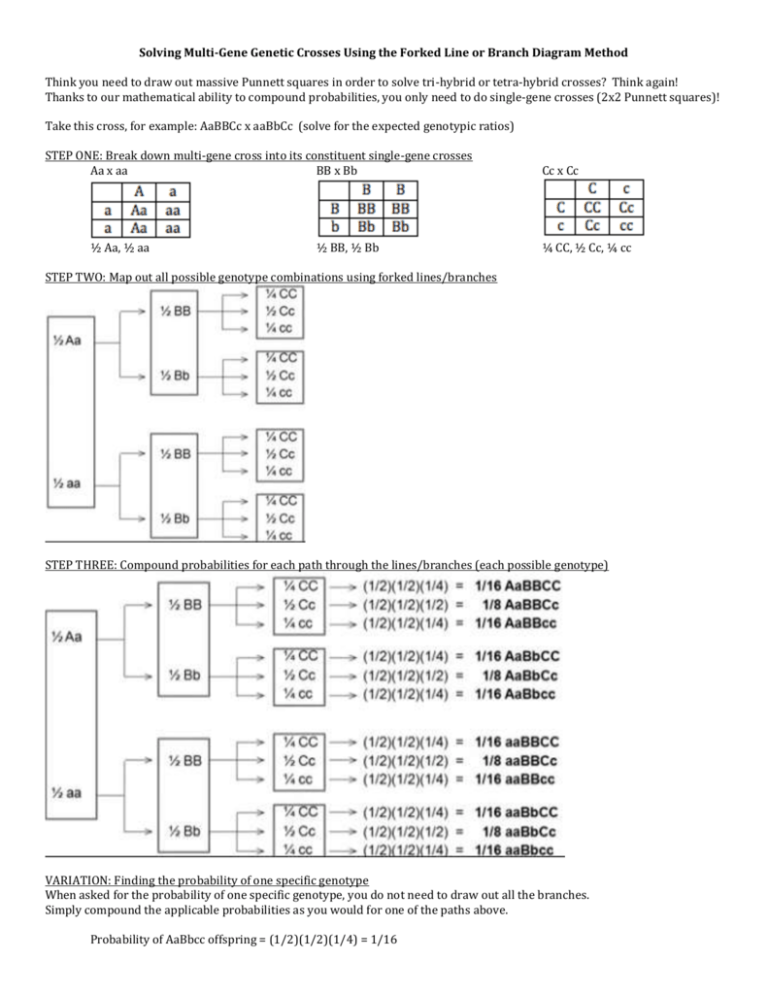
Solving Multi-Gene Genetic Crosses Using the Forked Line or Branch Diagram Method Think you need to draw out massive Punnett squares in order to solve tri-hybrid or tetra-hybrid crosses? Think again! Thanks to our mathematical ability to compound probabilities, you only need to do single-gene crosses (2x2 Punnett squares)! Take this cross, for example: AaBBCc x aaBbCc (solve for the expected genotypic ratios) STEP ONE: Break down multi-gene cross into its constituent single-gene crosses Aa x aa BB x Bb ½ Aa, ½ aa ½ BB, ½ Bb Cc x Cc ¼ CC, ½ Cc, ¼ cc STEP TWO: Map out all possible genotype combinations using forked lines/branches STEP THREE: Compound probabilities for each path through the lines/branches (each possible genotype) VARIATION: Finding the probability of one specific genotype When asked for the probability of one specific genotype, you do not need to draw out all the branches. Simply compound the applicable probabilities as you would for one of the paths above. Probability of AaBbcc offspring = (1/2)(1/2)(1/4) = 1/16 Name__________________________________________________________ Block_____________ Date_____________________________ AP Biology: Forked Line/Branch Diagram Practice Problems YOU MUST SHOW YOUR WORK! (including applicable single-gene Punnett squares) 1. In pea plants, round (R) is dominant to wrinkled (r), yellow (Y) is dominant to green (y), and tall (T) is dominant to short (t). A heterozygous round, green, homozygous tall pea plant is crossed with a heterozygous round, heterozygous yellow, short plant. What are the probabilities of the offspring being each possible genotype? 2. Also in pea plants, white flowers (W) are dominant to violet flowers (w). If two plants that are heterozygous for all traits (RrYyTtWw) are crossed, what are the expected genotypic ratios for the resulting offspring? 3. If two plants are hybrid for all traits (RrYyTtWw), what is the probability for each of the following specific genotypes? a. rrYyTTWw b. RryyTtWW c. RRYYttww 4. Also in pea plants, axial pod placement (A) is dominant to terminal pod placement (a). If two plants are heterozygous for all traits (RrYyTtWwAa), what is the probability for each of the following specific genotypes? a. RRYyttWwAA b. RryyTtWWaa c. rrYYTTwwAa
